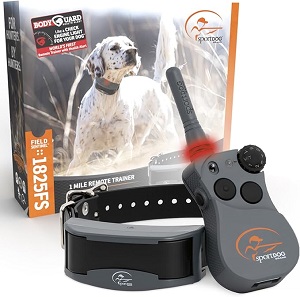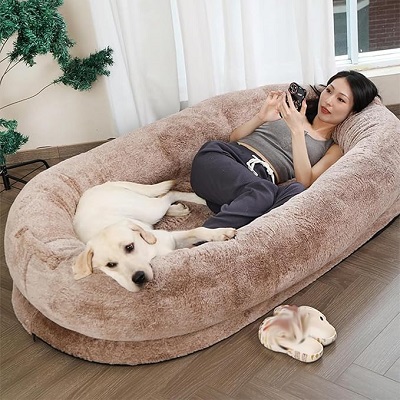
Large Dog Breeds vs. Small Dog Breeds: Which Is Right for You
When deciding to bring a dog into your home, one of the most important considerations is the size of the breed. Whether you choose a large or small dog will depend on your living space, lifestyle, and what you're looking for in a canine companion. Both large and small dog breeds come with their own unique advantages and challenges. In this article, we’ll compare the pros and cons of large dog breeds versus small dog breeds to help you determine which might be the right fit for your household.
1. Size and Living Space
Large Dog Breeds:
Large dogs are generally considered breeds that weigh over 50 pounds. Examples include Labrador Retrievers, German Shepherds, Golden Retrievers, and Boxers. These breeds require plenty of space, especially when it comes to their living environment. If you live in a small apartment, a large dog may struggle with the limited space to move around comfortably.
-
Pros:
- They can be more adaptable in large homes with yards.
- Their size can act as a natural deterrent for intruders, providing an added sense of security.
- Large dogs often have a calm demeanor, and they may be more relaxed indoors if they have enough room to move around.
-
Cons:
- They require more exercise and space to roam, which may be challenging for people with a small yard or no access to parks.
- Larger dogs generally need larger beds, more food, and higher medical costs, including treatments for joint issues and hip dysplasia.
- Their size can make them harder to manage, especially in close quarters or when walking them.
Small Dog Breeds:
Small dog breeds typically weigh under 20 pounds, such as Pugs, Chihuahuas, Shih Tzus, and Yorkshire Terriers. Because of their small size, they require less space to live comfortably, which makes them ideal for apartment dwellers or people who live in smaller homes.
-
Pros:
- Small dogs are better suited for apartments or homes with limited space.
- They tend to require less food and fewer resources than larger breeds, making them more budget-friendly.
- Small dogs are easier to manage physically, making them good options for people who might struggle with the strength and stamina required for larger dogs.
-
Cons:
- While their small size makes them easier to manage indoors, they may be more prone to being easily hurt by rough handling or larger animals.
- Some small breeds are known for being more vocal and may bark excessively, which can be problematic in close quarters or in apartment living.
2. Exercise and Activity Needs
Large Dog Breeds:
Larger dogs generally need more exercise than their smaller counterparts. Depending on the breed, they may require long walks, active play, and even access to a yard where they can run freely. Breeds like Border Collies or Siberian Huskies are high-energy dogs that need significant daily activity to stay healthy and happy.
Essentials for Your Newly Adopted Pet
Welcoming a shelter pet into your life is a beautiful journey. Here are some handpicked items to help your new friend feel safe, loved, and right at home:
-
Pros:
- They tend to be more active outdoors, which can help encourage you to be more active as well.
- If you enjoy activities like hiking, running, or biking, large breeds often make excellent companions for these pursuits.
-
Cons:
- If you’re not able to provide the necessary daily exercise, large dogs can become bored and may exhibit destructive behavior.
- They require a more structured routine when it comes to walks, mental stimulation, and playtime.
Small Dog Breeds:
In contrast, small dogs tend to need less physical exercise. While they still benefit from daily walks and playtime, their energy levels are often more manageable. Small breeds like Dachshunds or Cavalier King Charles Spaniels are content with shorter walks or play sessions in the home.
-
Pros:
- Smaller dogs don’t need as much exercise, making them a good choice for people with busy schedules or those who live in cities with limited outdoor access.
- Their activity levels are easier to accommodate, and they may be content with just a short walk or play in the yard.
-
Cons:
- Some small breeds, like Chihuahuas or Terriers, can have a lot of energy and may need more mental stimulation to avoid boredom.
- They may still need daily walks to maintain a healthy weight and avoid behavioral issues.
3. Grooming and Maintenance
Large Dog Breeds:
Large dogs often have thicker coats or more hair, which means they require regular grooming. Breeds like Golden Retrievers or Alaskan Malamutes shed quite a bit and will need frequent brushing to manage their fur. Additionally, large dogs can have higher grooming costs due to their size.
-
Pros:
- If you enjoy brushing and maintaining your dog’s coat, larger breeds can provide an opportunity for bonding during grooming sessions.
- Larger breeds with shorter coats, like Boxers or Great Danes, are typically lower maintenance in terms of grooming.
-
Cons:
- Many large breeds require regular brushing, sometimes several times a week, especially if they have longer coats.
- Larger dogs are more prone to shedding, which means more frequent cleaning of your home.
Small Dog Breeds:
Small dogs generally require less grooming and maintenance. However, some small breeds with long or curly coats, like Poodles or Shih Tzus, still require regular grooming. Breeds with short coats, like Chihuahuas or French Bulldogs, require minimal grooming.
-
Pros:
- Small breeds are generally easier to groom and take less time to clean.
- Short-haired small dogs tend to shed less and need less frequent brushing.
-
Cons:
- Some small dogs with longer hair can require regular grooming, and some may need to be trimmed by a professional.
- Small breeds, especially those with delicate skin, can be more prone to skin conditions that require additional attention.
4. Temperament and Behavior
Large Dog Breeds:
Larger breeds can range from calm and gentle to energetic and protective. Many large dogs, like Golden Retrievers, Great Danes, and Newfoundlands, are known for their friendly and tolerant nature. They are typically great with families and children, but they can be a bit more independent and stubborn in training.
-
Pros:
- Larger dogs are often more protective, making them a good choice for families or homes that value security.
- Many large dogs are gentle giants, known for their affectionate and calm demeanor.
-
Cons:
- Some large breeds can be more difficult to train and may need consistent leadership and socialization from an early age.
- Due to their size, some may inadvertently cause accidents (such as knocking over furniture or children) in small spaces.
Small Dog Breeds:
Small dogs tend to have more extroverted, lively, and sometimes spunky personalities. Breeds like Chihuahuas or Yorkshire Terriers are often more vocal and assertive. However, many small breeds, like Shih Tzus or Cavalier King Charles Spaniels, are known for their affectionate, gentle nature.
-
Pros:
- Smaller breeds are often more adaptable to different living environments and can adjust easily to apartment life or small spaces.
- Many small breeds are very sociable and enjoy spending time with their families, making them great companion pets.
-
Cons:
- Some small dogs can be more vocal and prone to excessive barking, especially if they’re not given enough mental stimulation.
- Small dogs might have a tendency to be more “yappy” or territorial, especially without proper training and socialization.
5. Health Considerations
Large Dog Breeds:
While large breeds are often healthy, they tend to have a shorter lifespan and are more prone to certain health issues, such as joint problems (hip and elbow dysplasia), heart disease, and bloat. Their larger size can put extra strain on their bodies, leading to a higher risk of obesity and related issues.
Small Dog Breeds:
Small dogs generally live longer than larger dogs and are less prone to joint issues. However, they can be prone to dental problems, patellar luxation (dislocated knee), and heart conditions. Small breeds tend to have higher metabolic rates, so they may require more frequent feeding.
Conclusion: Which Is Right for You
When choosing between a large dog and a small dog, the decision depends on several factors:
- Living Space: Large dogs require more space, whereas small dogs are better suited for apartments or homes with limited space.
- Exercise Needs: Large dogs generally need more exercise, while small dogs can get by with less activity.
- Maintenance: Large dogs may need more grooming, while small dogs are often easier to maintain but may still require some attention based on their coat type.
- Temperament: Consider your family’s needs. Large dogs can be protective and gentle, while small dogs often have energetic, feisty personalities.
Ultimately, the best breed for you will depend on your lifestyle, activity level, and the type of companionship you're looking for. Whether you choose a large dog or a small dog, both types offer unique joys and challenges, and either can make a loving and loyal companion.
Affiliate Products
We may earn a small commission when you shop through our links — it helps us keep sharing love and care for every dog out there, at no extra cost to you.
Up to 75% Discount

Dog Collar with Health Monitoring
BUY NOW »
Up to 55% Discount

Luxury Faux Furhuge Napping Bed
BUY NOW »

